There is no better investment into the future than exposing fresh minds to newer horizons. As an event meant to provide animation students and aspiring artists exposure to the different approaches to animation, the TASI & Asifa India organised Anifest India 2006 was bang on target!
The workshops which were conducted by eminent National as well as International Animation professionals were the actual stuff that made the event a great value proposition for the artists and students that attended.
It was also a good thing to see the enthusiasm with which the professionals generously shared their knowledge.
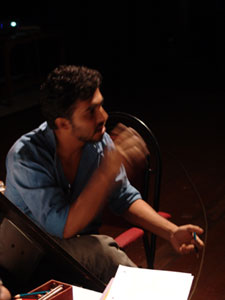
The event was kickstarted with a workshop on classical 2D animation by exponent Chetan Sharma who more than made up for his late coming with the fervour and zest with which he spoke about his craft. One could immediately sense a breeze of fresh inspiration flow through the audience, whetting their appetite for and understanding of drawing as well as acting skills within animation.
“Animation is all about performance and is all about finding that original expression within you and then being able to recreate it on paper” stated Sharma.
A video which showed Sharma acting out the elf commercial (which was directed by him) caught the audience spell bound. How many of them had enacted out scenes with such abandon before they began animating?
Not surprisingly, Sharma recieved quite a few instant requests from students who wished to get apprenticeships at his classical animation studio.
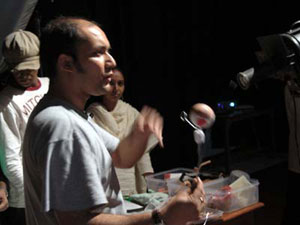
Controlling every movement: Stop Motion Animation
Taking second strike, Vaibhav Kumaresh, Dhimant Vyas and team including Arvind & Chandini Chaudasama, Mahboob Raja and Satya Prakash Ratha captivated one and all as each of the members elaborated upon a certain module of Stop Motion Animation.
“When you are doing stop motion shoot, it has to be a very controlled environment. Your model should never move unless you move it. The lights camera, your entire set up nothing should move unless it is planned to” stated Kumaresh.
“When creating the model, it is necessary that the sections on which the body weight of the character would be transferred should be strong. Especially the legs and the feet’ he added.
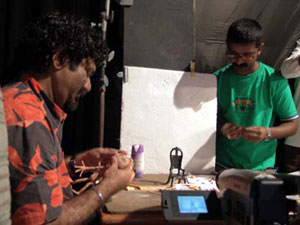
The stop motion workshop was interesting because the theory was being explained even while the team was actually producing a small shot where the Clay Vidyasagar, greeted the audience to Anifest.
Right from choosing the right kind of non galvanised aluminium wires for creating armatures and choosing high density thermocol, to explaining the nuances of getting the expression right, the workshop which was a live demonstration of creating stop motion animation was as comprehensive as it could be within the stipulated two hours that Vaibhav and team had.
The general consensus amongst the audience was that they would have loved to have much more of the stop motion workshop, probably a day long workshop where they too might get to actually model as well as animate?
360*Perspective – 3D Animation
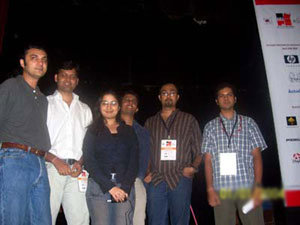
Next up was the 3D animation workshop by the Rhythm & Hues India team which threw light upon the basics of 3D animation and demonstrated the strengths of 3D. They trnasformed Vidyasagar, the stick figure mascot of Anifest into several avatars like rubby, fuggi and lokki. Rubby was created in a way which made him appear to be made of rubber. The final animation of Rubby indeed did demonstrate the kind of flexibility which is possible even within 3D. Flubby was made of air baloons and his characteristics were that he would float in the air. Lokki was a complete Iron and hinges creature with the element of weight and clanginess to him.
“Most of us are so absorbed in grappling and playing within our own mediums that we take it for granted that the medium we work on is the most painful one. But when we have workshops like these one realises that 2D is as beautiful and painful as 3D and 3D is as beautiful and painful as stop motion. Each medium has its strengths and weaknesses, it is definitely wonderful to be exposed to the intricacies of each and to be able to appreciate” remarked Rhythm & Hues Mehul Hirani responding to an earlier comment that 3D was relatively painless as it was computer reliant.
It may be a coincidence but the amount of questions directed at rigging artist Mrudul Sarang demonstrated the high amount of interest that rigging as a process held for most amongst the audience.
Put FX into context, think of the emotional response that your work will create
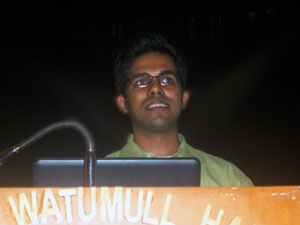
The Dreamworks presentation that followed floored one and all at the venue. After seeing the presentation one could realise why the studio is what it is. The amount of research and thought put into everything that they did was evident from the presentation. That coupled with the emphasis on performance and expression, be it in animation or in VFX.
DreamWorks Animation Head of Visual Effects for Over The Hedge, Mahesh Ramasubramanian who is a Pilani graduate in computer science first shared with the audience a brief history of how he landed a prized job at Dreamworks.
He then spoke about the importance of performance and understanding the context while creating visual effects. “Be it character animation or VFX with insentient objects one has to give a performance in context with the story. CG is all about communicating” emphasised Mahesh, showcasing a few scenes from Madagascar, Shrek and Over the Hedge as case in point.
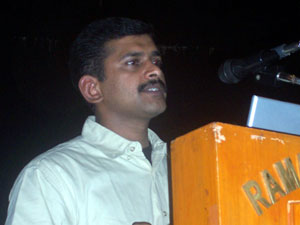
“Before starting work on an FX shot, first think about why the effect is being added, think of the emotional response that it will create. Also many a times we tend to forget about putting things into context. When I was an animator, I never thought much about these things, but when I became a supervisor I realised how important this is. If as animators we pay attention to these things, it will hugely improve efficiency for the animators as well as the workflow” added Mahesh.
Mahesh also spoke about how to achieve more realism. “Consistency is very necessary to portray a sense of realisM, also it is important to add hints of complexity within your scenes”
Be it the creation of the waves in Madagascar, or the mud shower in Shrek or the plume of smoke created in Over the Hedge every shot was explained as to how and why the approach to each of the shots.
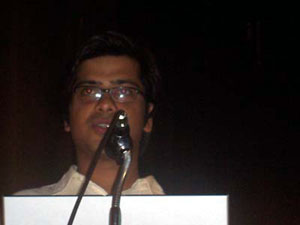
The second half of the Dreamworks presentation was given by head of character animation for Madagascar, Rex Grignon.
Stressing on the importance of innovation and bringing something new to the table everytime one did something, Grignon said,”If you always do what you always did then you will always get what you always got”
Using the character sketches and concept art from Madagascar as case in point, Grignon stressed that one had to always look at things anew and that the end objective of tools and techniques was to make the story and characters more fun and compelling.
“From an animators point of view, a rig exists only to enable the animators to express better. It is very easy to build a complex heavy rig, but it is extremely difficult to build a rig that’s light and allows for more expressiveness” said Rex displaying concept art of the various characters in Madagascar.
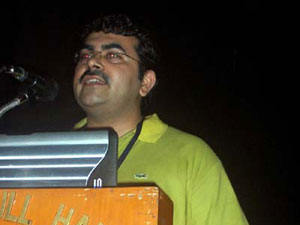
Weeding out human errors and creating filters for keeping the pipeline smooth
UTV Toons Technical Directors R K Chand and Shibu Menon made a presentation on Production workflow in 3DSMax. Currently one of the most critical challenges for studios across the world is creating an efficient production workflow which enhances creativity even while increasing efficiency.
“The idea is to take from each department what their addition has been to the content rather than passing files through each department in a linear manner which means a lot of excess baggage as well as tends to be cumbersome” remarked Chand.
“Naming conventions, co-ordinates as well as mapping of and reducing repetitive tasks is very important too” he added.
Shibu Menon then elucidated upon the workflow matrix that he and the team at UTV Toons had created after a lot of research and observation of how the work tends to flow.
UTV Toons Technical Director Shibu Menon
“Weeding out human errors and creating checks and filters in place that ensure that the content is clean of error is extremely important. To do this one needs a proper team of technical artists, scripters and programmers” he remarked.
“Technical artists are those who are the bridge between the technical team and the artists. Their role is to observe the workflow and find where human errors creep in and then create filters to check things. Scripters work within the programme and right scripts to execute things while the programmers are those that work at the SDK level and can extend the software, as well as create tools that can be integrated within the workflow” he added.
“File storage systems and directory structures play a very crucial role too. It is also important to ensure that modifications of files reflect across modules in real time, especially in the case where the production is happening in parallel processes” he further added.
CG Lighting@Prana
The Properties of light
Prana Studios Jaykar explains the Properties of light
The UTV Technical session was followed by Prana’s session on CG Lighting. Jaykar made an illuminating presentation about the fundamentals of CG lighting accompanied by a sprinkling of impressive clips.
Quoting the classic phrase, ‘Lights, Camera, Action!’ Jaykar quipped that,”There is a reason why Lights is mentioned first, because without light nothing is visible”
The ultimate session on day two was by DreamWorks Animation’s Marilyn Friedman and Shelley Page. The session focused on what kind of showreel the big studios wanted to see from artists. The audience was also treated to some exclusive sneak peaks and trailers from Over The Hedge.
Workshops and sharing of knowledge were the highlight of Anifest India 2006. And going by the hunger for knowledge sharing that most students demonstrated, one feels that it would be great if the Indian artists and student’s annual calendar was to be dotted by several more workshops and knowledge sharing sessions like this!

